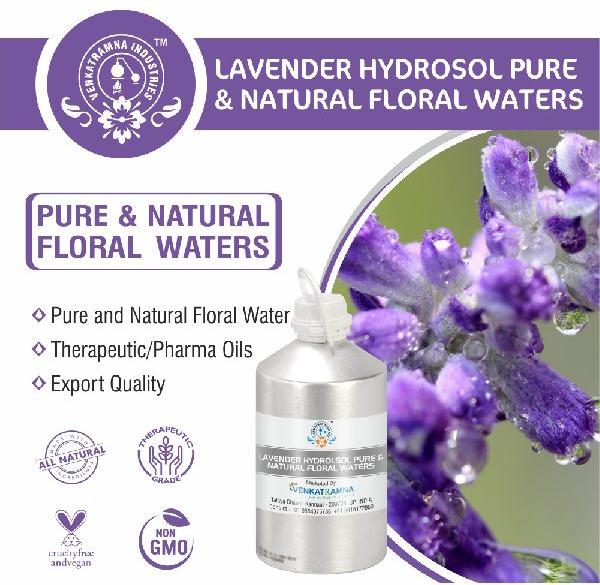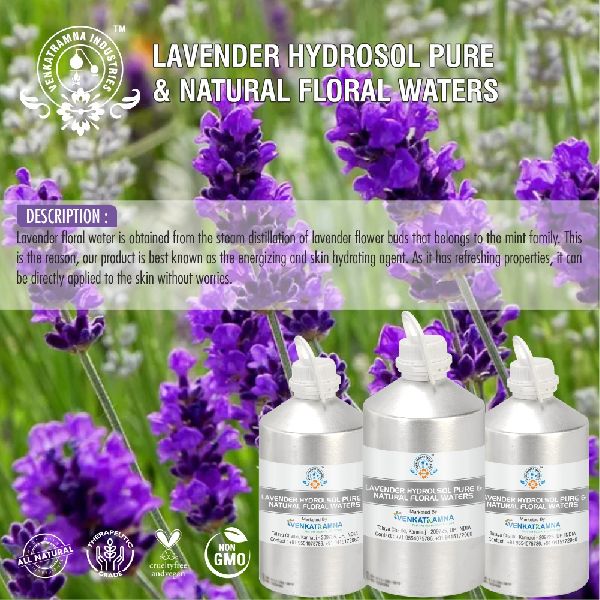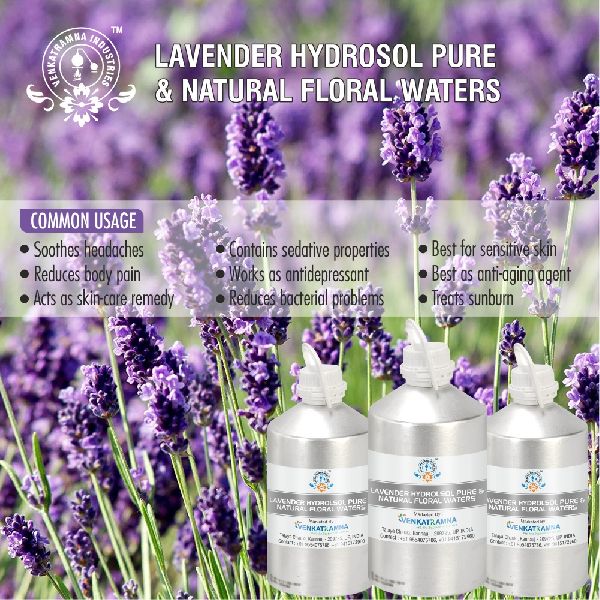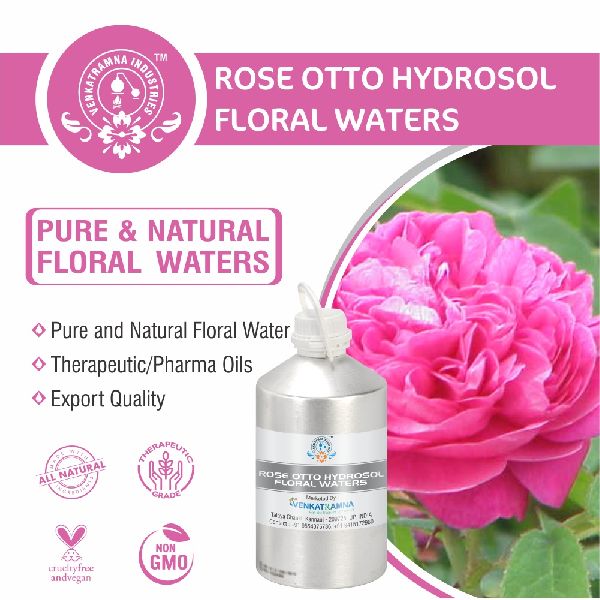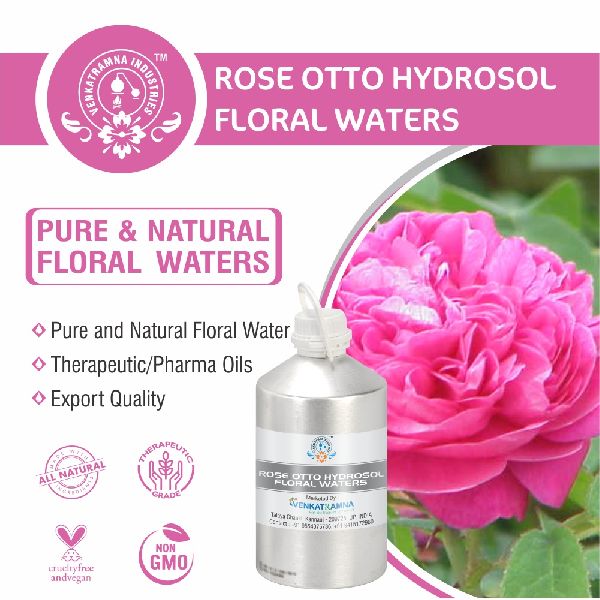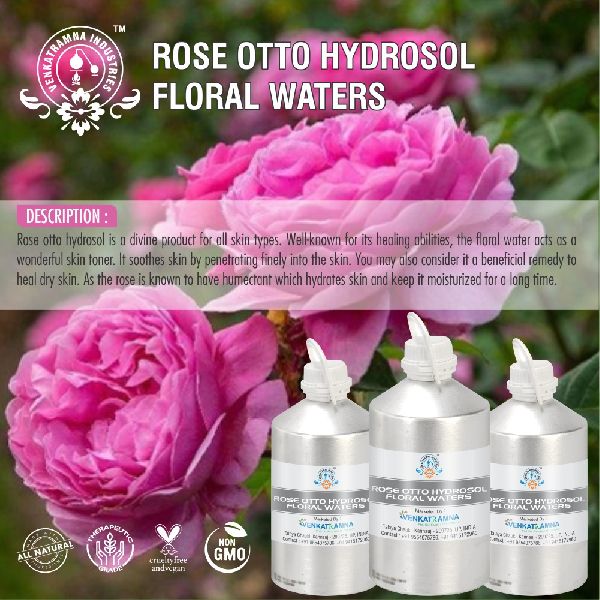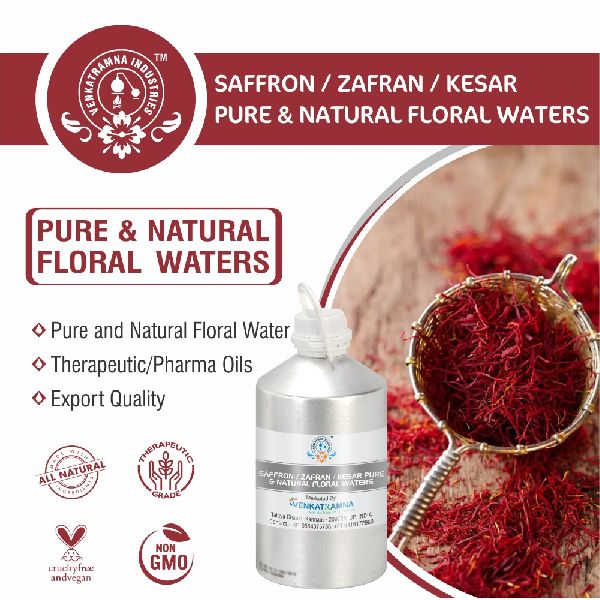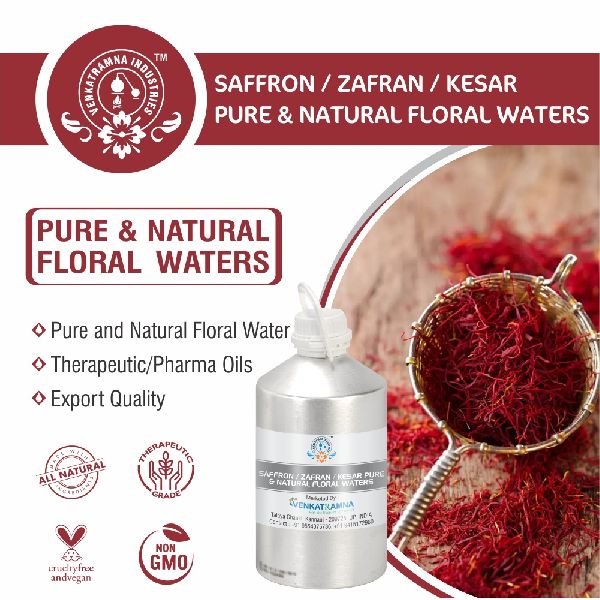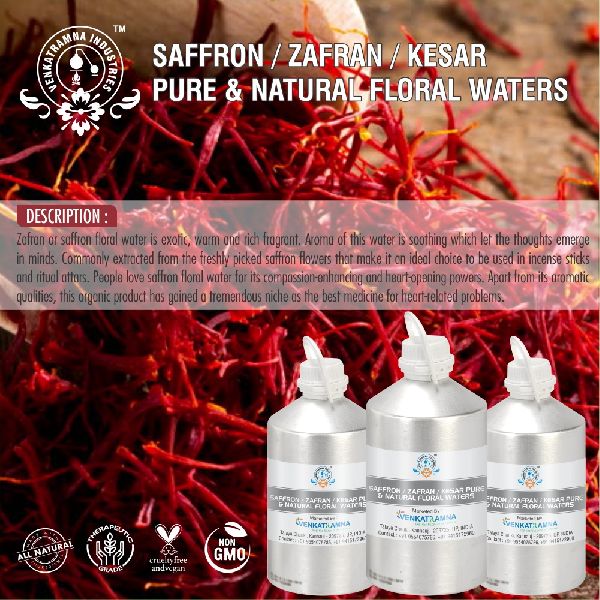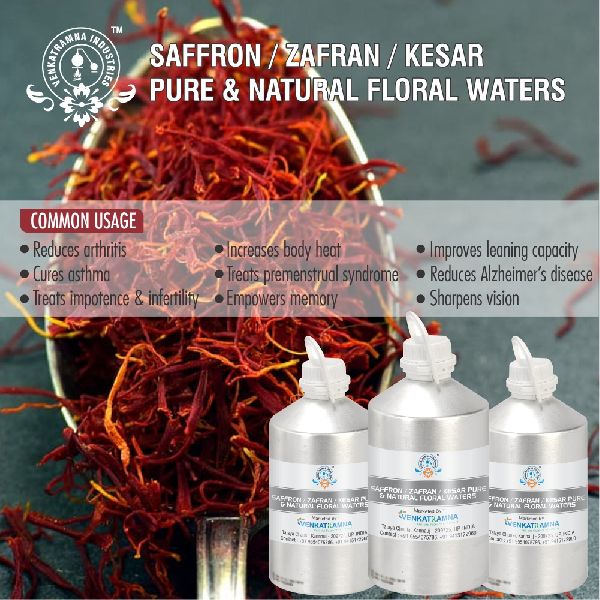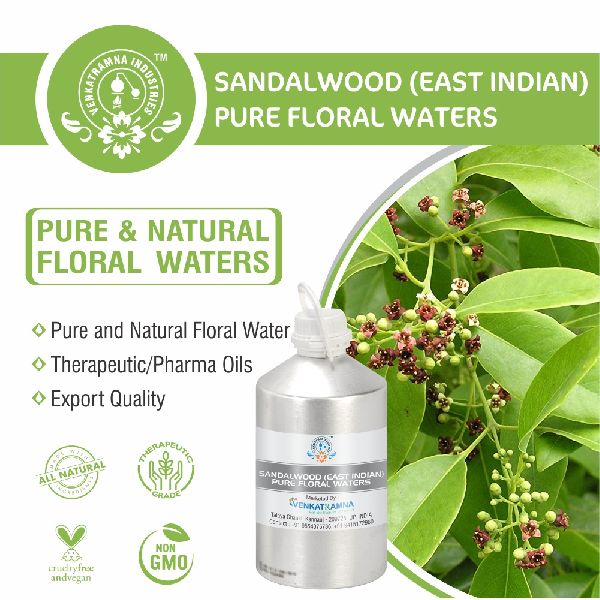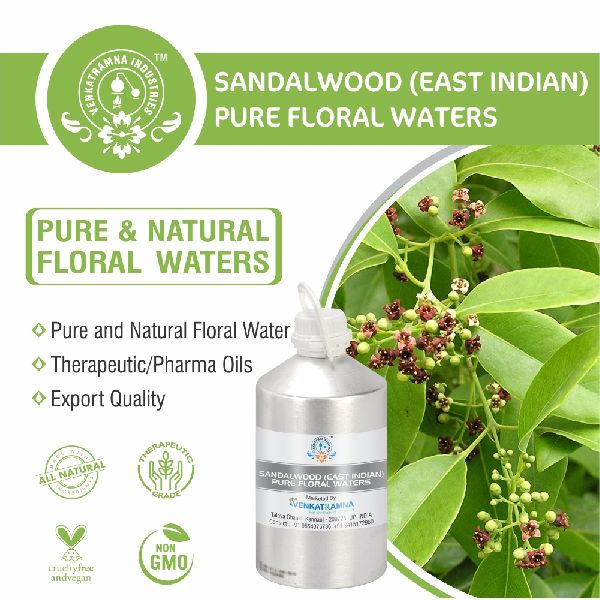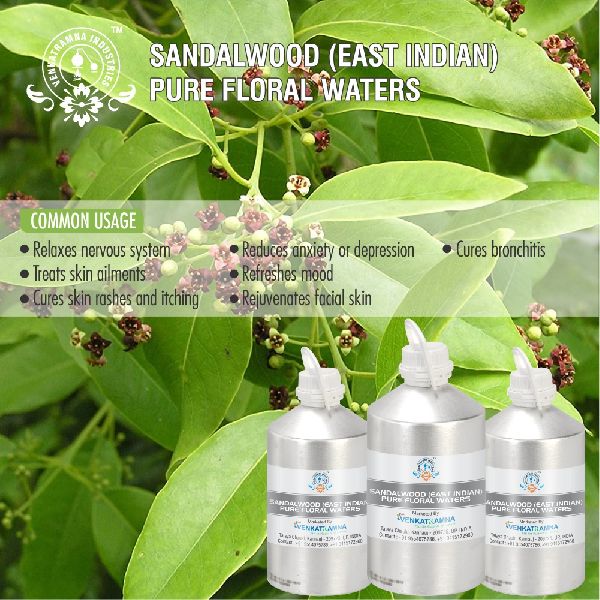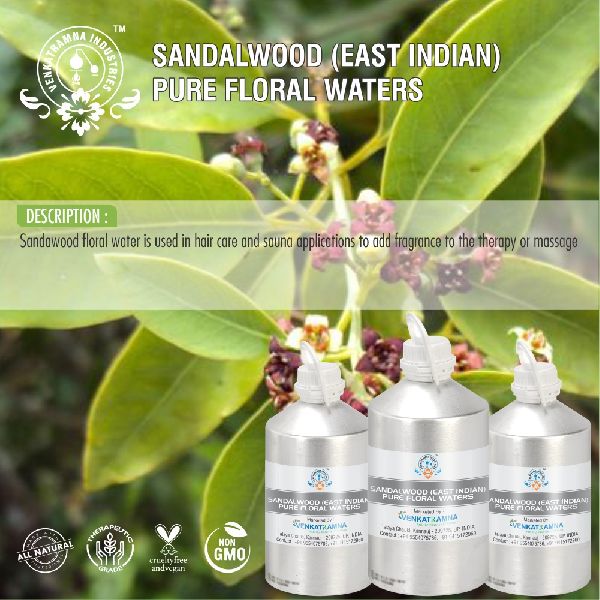Indra Nagar, Kanpur, Uttar Pradesh - GST No. 09AVOPS2676K1ZN
- Send SMS
- Send Email
Floral Water
Leading Manufacturers, Exporters, Wholesaler and Retailer of Lavender Pure Floral Water, Rose Otto Pure Floral Water, Saffron Pure Floral Water and Sandalwood Pure Floral Water from Kanpur.
| Business Type | Manufacturer, Exporter, Supplier, Retailer, Wholesaler |
| Botanical Name | Lavandula angustifolia |
| Common name | Lavander |
| Plant family | Lamiaceae |
| Genus | Lavandula |
| Appearance/Color | Water-like liquid which has clear & colorless consistency |
| Odor | Floral Aroma, with middle note |
| Origin | Bulgaria |
| Method of Extraction | Hydro Distillation |
| Concentration | 50 Percent |
Preferred Buyer From
| Location | Worldwide |
Floral water is obtained by the same process as the essential oil, namely by steam distillation of water.The flowers are crossed by water-steam. Once it is released from the container, the steam, which is enriched by the essential oil contained by the plants, is condensed in a coil that has been kept in cold.The recovered fluid is composed by essential oil and water: The floral water is the water naturally enriched by traces of essential oils (about 0.1%).The floral water concentration will be expressed as a percentage. A floral water at 50% means that 50 kg of dry plants were required to produce 100 kg of floral water.
Lavender oil is extracted from the lavender flowers. It is derived primarily using the steam distillation process. Lavender is highly-fragrant so have been widely used to produce potpourri for many years. Lavender essential oil prepared by keeping quality and 100% purity in mind which make it useful to formulate perfumes.
Intended Benefits/Uses or Properties
- Also known as hydrosols, floral waters are actually a by-product of the steam distillation process used to capture essential oils. During a normal essential oil distillation process, the steam containing the oils is cooled to turn it into water, and the essential oils floating on top are skimmed off and bottled. The remaining water is considered floral water! Any floral water contains water, water-soluble components of the plant, and trace amounts of the essential oil. This unique composition lends each floral water a full spectrum of the essence and properties of the botanical material from which it was derived. Though they are most often called floral waters, hydrosols can be produced from any plant matter like herbs, needles, leaves, woods, barks, and seeds.
- Floral waters have many valuable uses in beauty, skincare, haircare, and household products. At Venkatramna Industries, we offer wide range of floral waters for a variety of product applications. They can be sold as pure floral waters to be used as sprays and spritzers, or they can be strategically blended with other ingredients to create versatile consumer products.
| Business Type | Manufacturer, Exporter, Supplier, Retailer, Wholesaler |
| Botanical Name | Damask Rose, Rose, Gulab |
| Plant family | Rosaceae |
| Genus | Rosa |
| Appearance/Color | Light yellow liquid |
| Odor | Top note Sweet Aroma |
| Origin | India |
| Method of Extraction | Hydro Distillation |
| Concentration | 50 Percent |
Preferred Buyer From
| Location | Worldwide |
Floral water is obtained by the same process as the essential oil, namely by steam distillation of water.The flowers are crossed by water-steam. Once it is released from the container, the steam, which is enriched by the essential oil contained by the plants, is condensed in a coil that has been kept in cold.The recovered fluid is composed by essential oil and water: The floral water is the water naturally enriched by traces of essential oils (about 0.1%).The floral water concentration will be expressed as a percentage. A floral water at 50% means that 50 kg of dry plants were required to produce 100 kg of floral water.
Floral water is obtained by the same process as the essential oil, namely by steam distillation of water.The flowers are crossed by water-steam. Once it is released from the container, the steam, which is enriched by the essential oil contained by the plants, is condensed in a coil that has been kept in cold.The recovered fluid is composed by essential oil and water: The floral water is the water naturally enriched by traces of essential oils (about 0.1%).The floral water concentration will be expressed as a percentage. A floral water at 50% means that 50 kg of dry plants were required to produce 100 kg of floral water.
Intended Benefits/Uses or Properties
- Also known as hydrosols, floral waters are actually aby-product of the steam distillation process used to capture essential oils. During a normal essential oil distillation process, the steam containing the oils is cooled to turn it into water, and the essential oils floating on top are skimmed off and bottled. The remaining water is considered floral water! Any floral water contains water, water-soluble components of the plant, and trace amounts of the essential oil. This unique composition lends each floral water a full spectrum of the essence and properties of the botanical material from which it was derived. Though they are most often called floral waters, hydrosols can be produced from any plant matter like herbs, needles, leaves, woods, barks, and seeds.
- Floral waters have many valuable uses in beauty, skincare, haircare, and household products. At Venkatramna Industries, we offer wide range of floral waters for a variety of product applications. They can be sold as pure floral waters to be used as sprays and spritzers, or they can be strategically blended with other ingredients to create versatile consumer products.
| Business Type | Manufacturer, Exporter, Supplier, Retailer, Wholesaler |
| Botanical Name | Crocus Sativus L. |
| Common name | Saffron, Kesar |
| Plant family | Iridaceae |
| Appearance/Color | A thin liquid offering reddish-orange to golden yellow color. |
| Odor | Sweet Aroma |
| Origin | Southwest Asia |
| Method of Extraction | Hydro Distillation |
| Concentration | 50 Percent |
Preferred Buyer From
| Location | Worldwide |
Floral water is obtained by the same process as the essential oil, namely by steam distillation of water.The flowers are crossed by water-steam. Once it is released from the container, the steam, which is enriched by the essential oil contained by the plants, is condensed in a coil that has been kept in cold.The recovered fluid is composed by essential oil and water: The floral water is the water naturally enriched by traces of essential oils (about 0.1%).The floral water concentration will be expressed as a percentage. A floral water at 50% means that 50 kg of dry plants were required to produce 100 kg of floral water.
Saffron (Crocus sativus L.), a member of the Iridaceae family, is a sterile triploid geophyte plant. Saffron is adapted to arid and semiarid regions and naturally has an annual life cycle, but it is cultivated as a perennial crop by controlling its corm growth. It is important to study the crucial factors affecting mother corm formation and growth due to their special role on the dried stigma yield of saffron.
Saffron (Crocus sativus L.) is used as a coloring and flavoring agent in food preparation as well as in perfumes and cosmetics. The main components of saffron stigmas are carotenoids (crocetin, crocins, α-carotene, lycopene, zeaxanthin), monoterpene aldehydes (picrocrocin and safranal), monoterpenoids (crocusatines), isophorones, and flavonoids. Crocins and crocetin are saffron coloring agents, while the unique aroma of saffron is related to safranal. Additionally, saffron has been employed for many purposes in traditional medicine, and therefore the pharmacological activities of saffron and its constituents have been extensively studied.
Intended Benefits/Uses or Properties
- Also known as hydrosols, floral waters are actually a by-product of the steam distillation process used to capture essential oils. During a normal essential oil distillation process, the steam containing the oils is cooled to turn it into water, and the essential oils floating on top are skimmed off and bottled. The remaining water is considered floral water! Any floral water contains water, water-soluble components of the plant, and trace amounts of the essential oil. This unique composition lends each floral water a full spectrum of the essence and properties of the botanical material from which it was derived. Though they are most often called floral waters, hydrosols can be produced from any plant matter like herbs, needles, leaves, woods, barks, and seeds.
- Floral waters have many valuable uses in beauty, skincare, haircare, and household products. At Venkatramna Industries, we offer wide range of floral waters for a variety of product applications. They can be sold as pure floral waters to be used as sprays and spritzers, or they can be strategically blended with other ingredients to create versatile consumer products.
| Business Type | Manufacturer, Exporter, Supplier, Retailer, Wholesaler |
| Botanical Name | Santalum albums |
| Common name | Sandalwood |
| Plant family | Santalaceae |
| Genus | Santalum |
| Appearance/Color | Colorless thick liquid |
| Odor | Base note having soothing fragrance |
| Origin | India |
| Method of Extraction | Hydro Distillation |
| Concentration | 50 Percent |
Preferred Buyer From
| Location | Worldwide |
Floral water is obtained by the same process as the essential oil, namely by steam distillation of water.The flowers are crossed by water-steam. Once it is released from the container, the steam, which is enriched by the essential oil contained by the plants, is condensed in a coil that has been kept in cold.The recovered fluid is composed by essential oil and water: The floral water is the water naturally enriched by traces of essential oils (about 0.1%).The floral water concentration will be expressed as a percentage. A floral water at 50% means that 50 kg of dry plants were required to produce 100 kg of floral water.
Sandalwood oil, distilled from the heart wood and roots of the sandalwood tree, is one of the most valuable essential oils, valued by perfumers for its woody notes, providing a deep rich base note to perfumes and acting as a natural fixative. Sandalwood oils come from a range of species, and while they all have similar uses, quality and characteristics vary between the oils of the different species. The key species used for distillation of essential oils are listed below, with East Indian Sandalwood oil and Australian Sandalwood oil dominating supplies to the market:
- East Indian Sandalwood oil (Santalum album). The most well-known and oldest traded type of sandalwood, in use for thousands of years. Cultivation centered in India (it is native to the highlands of southern India and the Malayan Archipelago) with the center of production in India in Mysore. Its natural distribution extends down to Indonesia (particularly Timor), and it has been introduced into Australia and plantations established in the tropical northwestern areas – an estimated 8,000 ha with annual additions of around 1,000 ha; more recently it has also been introduced into a number of the S Pacific Islands and plantations established (Fiji, Tonga, Vanuatu, New Caledonia);
- Australian Sandalwood oil (Santalum spicatum, syn. Eucarya spicata). (Also referred to as West Australian Sandalwood oil). Native to the desert-like areas of SW Australia, close to Perth. Substantial plantations have also now been established – around 15,000 ha with annual additions of 1-2,000 ha. A second sandalwood species, S. lanceolatum, is also found in Australia, principally in Queensland, NSW, and northwestern part of Western Australia, but is little used commercially.
- Santalum paniculatum. Only found in Hawaii. Around 7,000 ha reported to be under sustainable management. Commercial oil now coming onto the market.
- Santalum yasi. Found in Fiji, Samoa and Tonga. Traditionally included in mixed cropping agroforestry cultivation systems. The species hybridizes readily with S. album resulting in variable quality of oil depending on the source trees.
- Santalum austrocaledonicum. Found in Indonesia, Papua New Guinea, New Caledonia.

